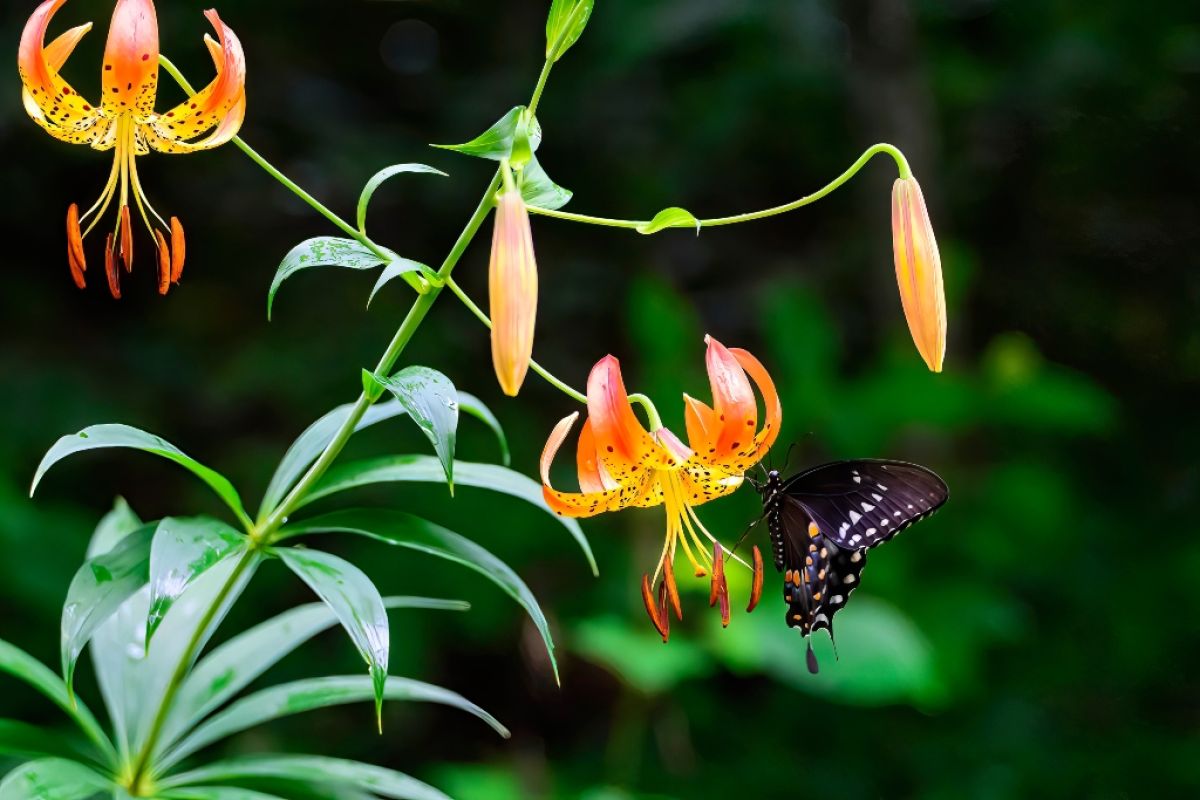There were already some lovely native lilies growing in North America when the first settlers arrived.
One native, with the common name of meadow lily, has downward hanging flowers on tall stems and is found from Quebec to Alabama and west into Indiana. It enjoys moist conditions and blooms in July. It varies in color from yellow to red, is bell shaped and has tiny brown dots on the petals.
There is another native with upright flowers called wood lily, and the botanical name of Lilium philadelphicum that likes dry sandy soil and light shade, and it grows from New England to the Rocky Mountains. It is also orange red with speckled spots, and it flowers in June.
Another that is spectacular is Lilium superb, spelled “superbum,” but it is not pronounced as it is spelt. It can grow up to 8 feet tall and can produce as many as 40 flowers on one plant, in July. The petals recurve, so the common name is Turk's cap. The interior of the orange-red flowers is green with spots, and there are leaves that grow in circular whorls and this lily grows wild in wet fields in the eastern states.
It is best to grow all our native lilies from bulbs, as seedlings take a while to bloom, and most like moisture to bloom well. The exception is Lilium philadelphicum, which, as noted earlier, likes drier soil to bloom profusely.
This is Moya Andrews, and today we focused on our native lilies.










